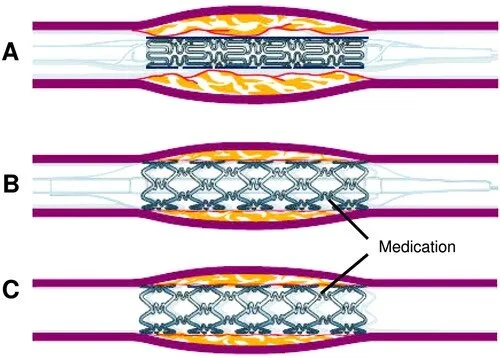Dual Antiplatelet Therapy After Percutaneous Coronary Intervention and Drug-Eluting StentsA Systematic Review and Network Meta-Analysis(Abstract)
Safi U. Khan, MD Maninder Singh, MBBS Shahul Valavoor, MD Muhammad U. Khan, MD Ahmad N. Lone, MD Muhammad Zia Khan, MD Muhammad Shahzeb Khan, MD Preethi Mani, MD Samir R. Kapadia, MD Erin D. Michos, MD, MHS Gregg W. Stone, MD Ankur Kalra, MD Deepak L. BhattMD, MPH
Background:
The optimal duration of dual antiplatelet therapy (DAPT) after percutaneous coronary intervention with drug-eluting stents remains uncertain. We compared short-term (<6-month) DAPT followed by aspirin or P2Y12 inhibitor monotherapy; midterm (6-month) DAPT; 12-month DAPT; and extended-term (>12-month) DAPT after percutaneous coronary intervention with drug-eluting stents.
Methods:
Twenty-four randomized, controlled trials were selected using Medline, Embase, Cochrane library, and online databases through September 2019. The coprimary end points were myocardial infarction and major bleeding, which constituted the net clinical benefit. A frequentist network meta-analysis was conducted with a random-effects model.
Results:
In 79 073 patients, at a median follow-up of 18 months, extended-term DAPT was associated with a reduced risk of myocardial infarction in comparison with 12-month DAPT (absolute risk difference, –3.8 incident cases per 1000 person-years; relative risk, 0.68 [95% CI, 0.54–0.87]), midterm DAPT (absolute risk difference, –4.6 incident cases per 1000 person-years; relative risk, 0.61 [0.45–0.83]), and short-term DAPT followed by aspirin monotherapy (absolute risk difference, –6.1 incident cases per 1000 person-years; relative risk, 0.55 [0.37–0.83]), or P2Y12 inhibitor monotherapy (absolute risk difference, –3.7 incident cases per 1000 person-years; relative risk, 0.69 [0.51–0.95]). Conversely, extended-term DAPT was associated with a higher risk of major bleeding than all other DAPT groups. In comparison with 12-month DAPT, no significant differences in the risks of ischemic end points or major bleeding were observed with midterm or short-term DAPT followed by aspirin monotherapy, with the exception that short-term DAPT followed by P2Y12 inhibitor monotherapy was associated with a reduced risk of major bleeding. There were no significant differences with respect to mortality between the different DAPT strategies. In acute coronary syndrome, extended-term in comparison with 12-month DAPT was associated with a reduced risk of myocardial infarction without a significant increase in the risk of major bleeding.
Conclusions:
The present network meta-analysis suggests that, in comparison with 12-month DAPT, short-term DAPT followed by P2Y12 inhibitor monotherapy reduces major bleeding after percutaneous coronary intervention with drug-eluting stents, whereas extended-term DAPT reduces myocardial infarction at the expense of more bleeding events.

